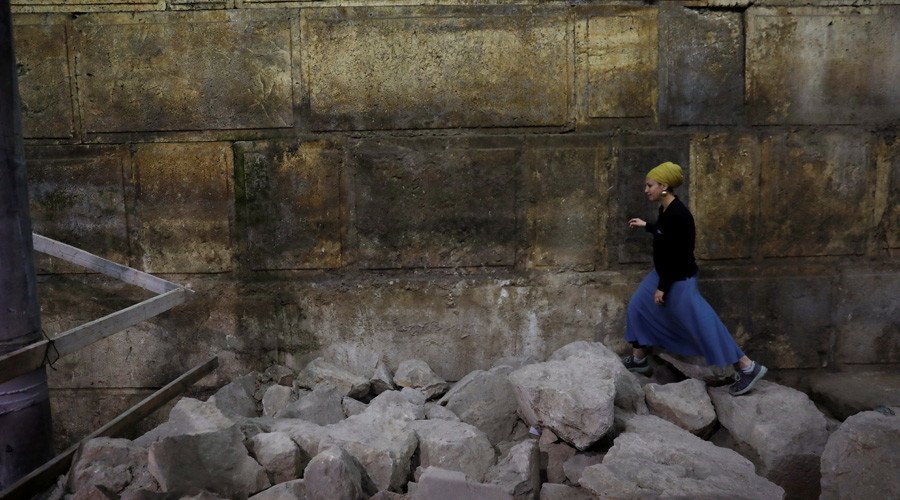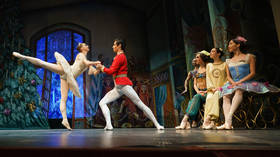Sections of Western Wall, Roman theater unseen for 1,700yrs uncovered in Jerusalem (PHOTOS)
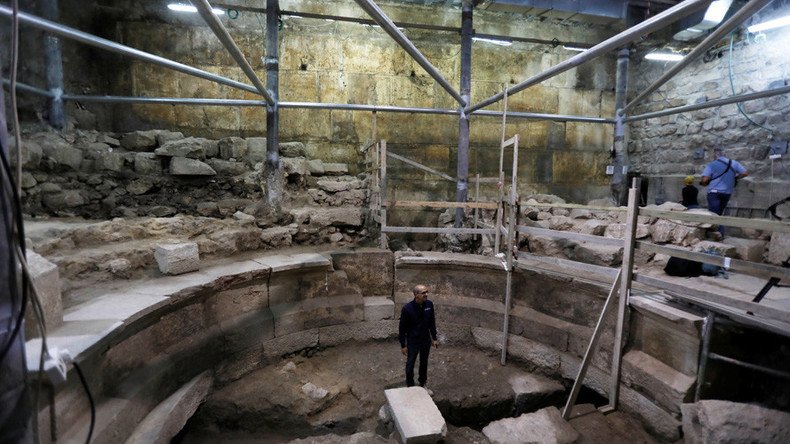
Archaeologists have discovered an eight-meter-high section of the Western Wall and a subterranean Roman theater, which haven’t been seen by human eyes for almost two millennia.
The Israel Antiquity Authority announced the discovery on Monday following a two-year excavation of the site.
“From a research perspective, this is a sensational find,” archaeologist Joe Uziel said at a press conference on Monday morning in Jerusalem’s Old City, as cited by The Jerusalem Post.
“The discovery was a real surprise. We did not imagine that a window would open for us onto the mystery of Jerusalem’s lost theater. Like much of archeological research, the expectation is that a certain thing will be found. But at the end of the process, other findings – surprising and thought-provoking – are unearthed,” Uziel added.
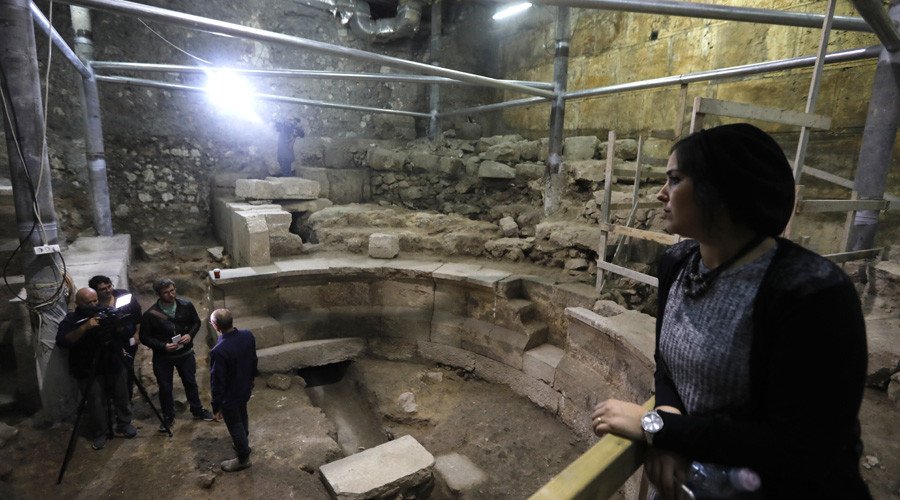
Archaeologists have searched for the ruins for 150 years, according to The Times of Israel, and their discovery is already altering their perceptions of Roman-occupied Jerusalem after the fall of the Second Temple and destruction of Jerusalem by the Romans in 70 CE.
READ MORE: US withdraws from UNESCO, cites ‘continuing anti-Israel bias’
Early discoveries indicate that the city was in a state of upheaval at the time: the theater itself was not fully constructed, the paving stones used for roads had been turned into makeshift benches, and even drainage ducts had been rerouted to accommodate additional Roman construction work on a stadium.
“A number of findings at the site indicate this, among them a staircase that was never completely hewn,” said Avi Solomon, another member of the archaeological team. “It is clear that great effort was invested in the building’s construction. But oddly, it was abandoned before it was put to use.”
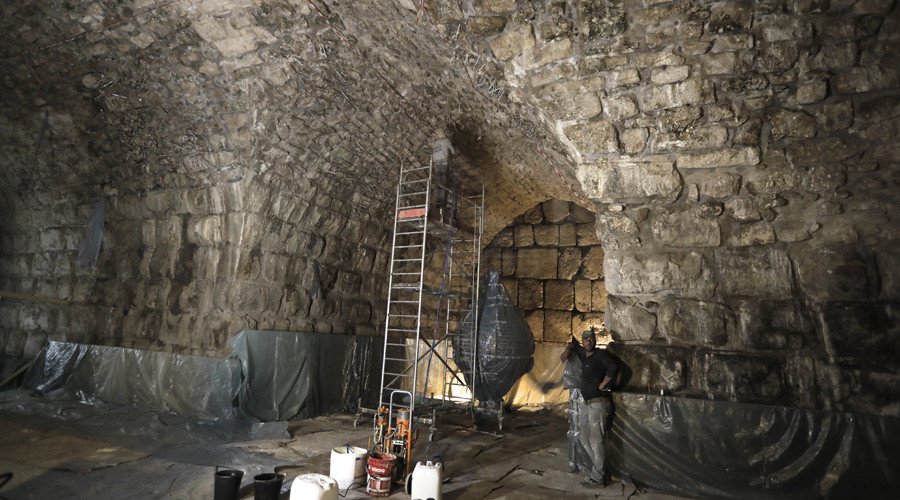
“The reasons for this are unknown,” he added. “But they may have been connected to a significant historical event – perhaps the Bar Kokhba revolt. Construction of the building may have been started, and then abandoned when the revolt broke out.”
READ MORE: Long-lost Roman city of Neapolis discovered off Tunisia (PHOTOS)
The dig is taking place beneath Wilson’s Arch, beside the men's section of the Western Wall. The team also constructed a reinforced floor to prevent any disruption to worshippers at the Temple Mount, one of Jerusalem's holiest sites.
The team will continue its work for at least another six months with a view to uncovering ruins and relics from Jerusalem's First Temple era. They are awaiting the results of carbon-14 dating but Uziel says the find “dates pretty solidly to the late Roman period.”
“Advanced research methods from various fields were employed to uncover remains invisible to the naked eye, but only viewable through a microscope,” said Uziel.
“This enables conclusions to be drawn at a level of precision that would have been impossible in the past, transforming the study of the findings at Wilson’s Arch into pioneering, cutting-edge micro-archeological research,” Uziel added.
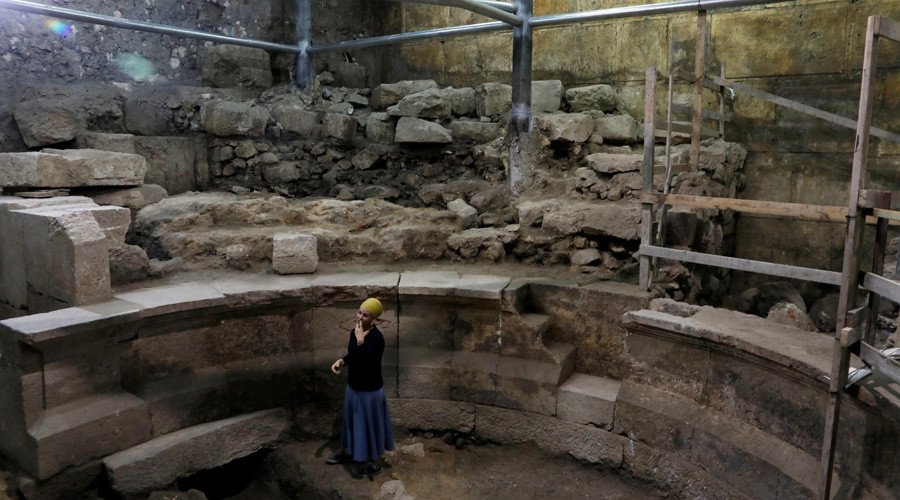
“What happened on the Temple Mount between the destruction of the Second Temple and the Muslim period is one of the riddles we have yet to solve,” said Uziel. The team have yet to uncover any evidence of the Roman Temple of Jupiter, which was rumored to have been built on the Temple Mount.
READ MORE: Mosaic found in Jerusalem once decorated ‘ancient hostel’ – study
“We have a great deal of archaeological work ahead and I am certain that the deeper we dig, the earlier the periods we will reach, further anchoring the profound connection of the Jewish people to the Land of Israel and to Jerusalem,” said Rabbi Shmuel Rabinovitch, Rabbi of the Western Wall and the Holy Places.
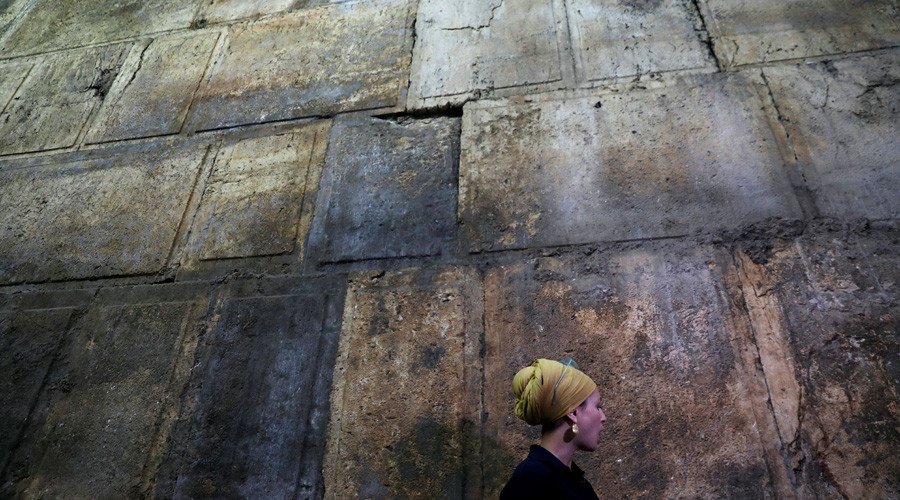
The team's findings will be presented later this year at a conference entitled, “New Studies in the Archeology of Jerusalem and its Environs,” which will mark 50 years of archaeology since the unification of Jerusalem.
